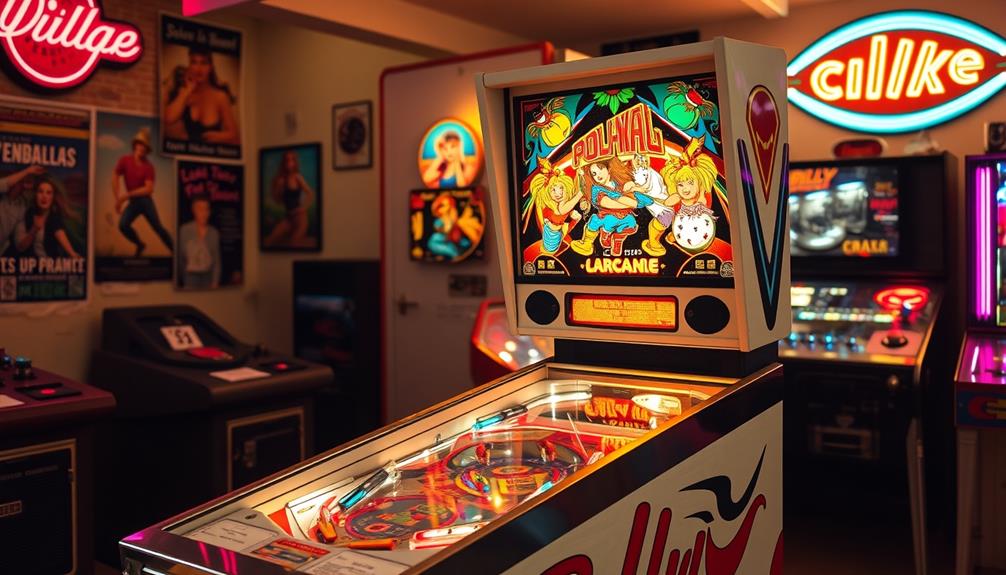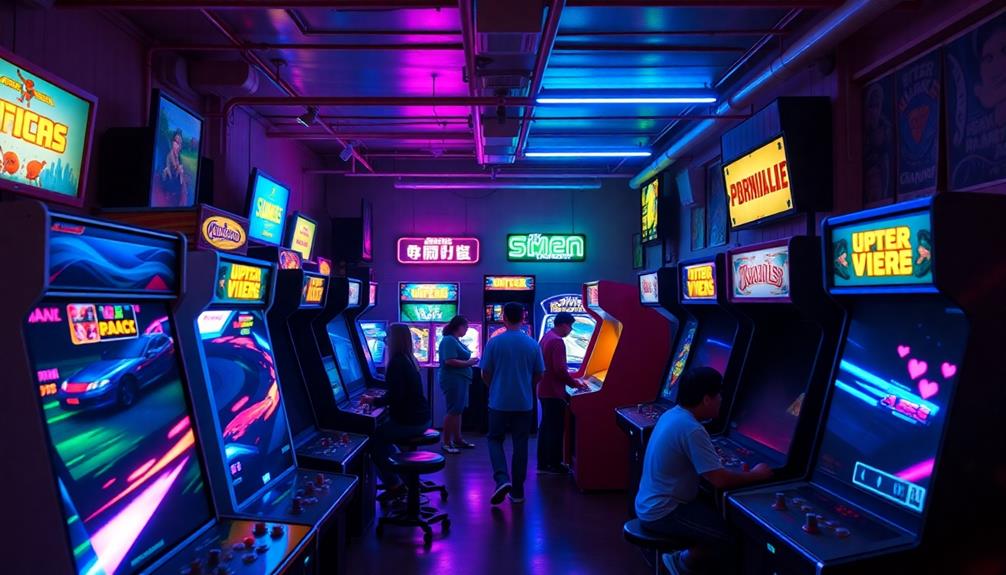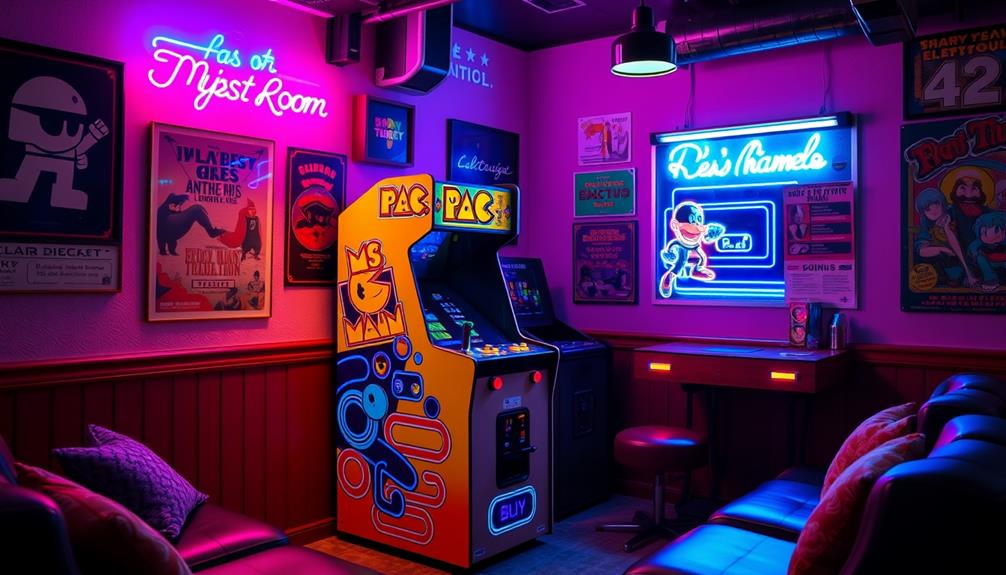The Pixel Original Pac-Man brings the classic maze chase back to life, letting you experience the thrills that defined gaming since 1980. You'll navigate through vibrant mazes, munching on pellets while dodging quirky ghosts, each with unique moves to test your strategy. It transformed not just arcades but pop culture itself, forking over millions in merchandise and captivating players of all ages. With continuous reinvention and community engagement, the franchise keeps evolving. Get ready to rediscover Pac-Man in ways you never expected—there's so much more to uncover about its lasting appeal and innovative future!
Key Takeaways
- The original Pac-Man's pixelated maze chase gameplay remains beloved, blending nostalgia with engaging mechanics for both new and returning players.
- Iconic characters, including Pac-Man and the distinct ghosts, utilize unique behaviors that enhance strategic gameplay and challenge.
- The franchise has experienced a revival through remakes and adaptations, ensuring its relevance in modern gaming culture.
- Community engagement thrives with fan art, tournaments, and online forums, celebrating the enduring legacy of Pac-Man across generations.
- Future collaborations and innovative experiences promise to keep the Pac-Man franchise fresh and exciting for diverse audiences.
Legacy of Pac-Man
The legacy of Pac-Man is undeniable, as it transformed the gaming landscape since its debut in 1980. You can see its influence in the way arcade games evolved, setting a standard for non-violent gameplay and character-driven design. Pac-Man introduced a unique maze chase experience that captivated players and created a new genre in video game design. Its innovative AI mechanics, which dictated the behavior of its ghostly adversaries, paved the way for more complex character interactions in future games.
The cultural impact of Pac-Man extends far beyond the arcade. By 1982, merchandise sales surpassed $1 billion in the U.S., showcasing its wide-reaching appeal. You've likely encountered various adaptations, including television series and music, further solidifying its place in popular culture. Even decades later, Pac-Man remains a staple, celebrated in compilations, remakes, and tournaments, continuing to draw in both old fans and new players alike.
In essence, the legacy of Pac-Man isn't just about gameplay; it's about how it shaped an entire industry, influencing not only design but also how we perceive video games as a cultural phenomenon.
Gameplay Mechanics
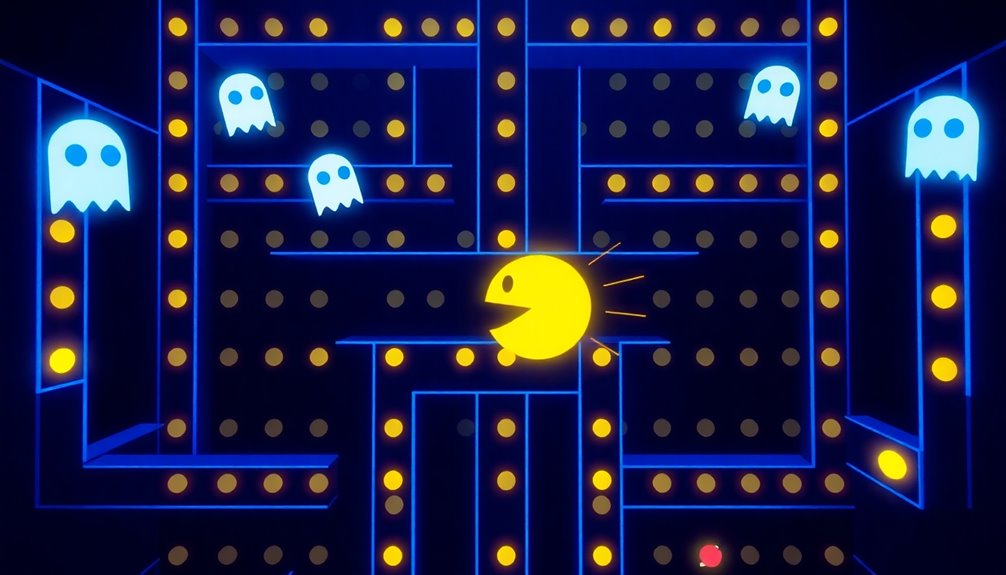
While navigating the maze in Pac-Man, you'll find yourself consumed by the thrill of strategy and quick reflexes. The gameplay mechanics revolve around your ability to consume all the pellets while avoiding four unique ghosts: Blinky, Pinky, Inky, and Clyde. Each ghost has its own movement pattern, presenting a distinct challenge that keeps players on their toes.
Power pellets are your key to turning the tables. When you eat one, Pac-Man gains temporary invincibility, allowing you to chase down the ghosts for bonus points as they turn blue. As you progress through levels, the ghosts speed up and become more aggressive, testing your skill in maneuvering throughout the maze.
The maze layout remains constant, but ghost behaviors shift between Chase, Scatter, and Frightened modes, adding layers of complexity. This dynamic gameplay encourages players to develop effective strategies to maximize their score. While Pac-Man is accessible for beginners, it offers enough depth to keep seasoned players engaged. Mastering the balance of speed, timing, and planning is essential to conquer the maze and achieve high scores. Embrace the challenge, and let your Pac-Man journey begin!
Market Influence
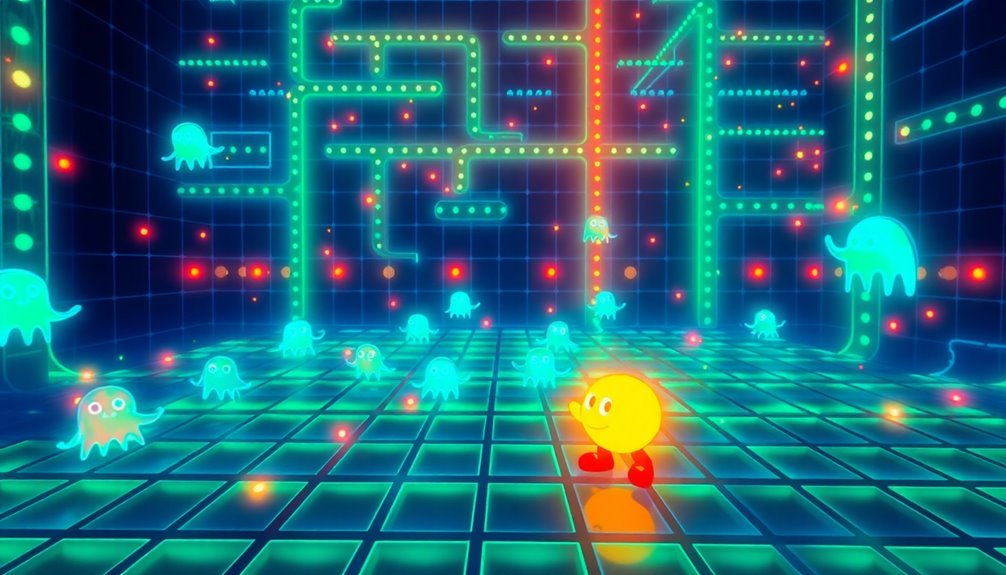
Pac-Man's impact extended far beyond the arcade, reshaping the gaming landscape and influencing market trends in unprecedented ways. As the first video game to target a female audience, Pac-Man broke traditional gaming norms and broadened demographic appeal, attracting players who'd previously felt alienated by the industry. This strategic shift not only expanded the player base but also significantly boosted revenue. Additionally, the introduction of character-driven gameplay in Pac-Man inspired other developers to create games that focused on relatable characters, enhancing player engagement.
Within its first year, Pac-Man grossed over $1 billion in quarters in North America alone, and by 1982, it had sold 400,000 arcade units, making it the best-selling arcade game of all time. The game's success helped usher in the golden age of arcade games, paving the way for character-driven gameplay that captivated players' imaginations and set new marketing strategies in motion within the gaming industry.
The positive reception of Pac-Man encouraged over 95 licensees to create related merchandise, with sales exceeding $1 billion in the U.S. alone by 1982. This phenomenon not only illustrated the game's cultural significance but also demonstrated the lucrative potential of gaming franchises, cementing Pac-Man's legacy as a market influencer that transformed arcade gaming forever. Additionally, the game's success highlighted the importance of NLP in customer experience as it inspired game developers to create more engaging and interactive experiences for players.
Technical Aspects
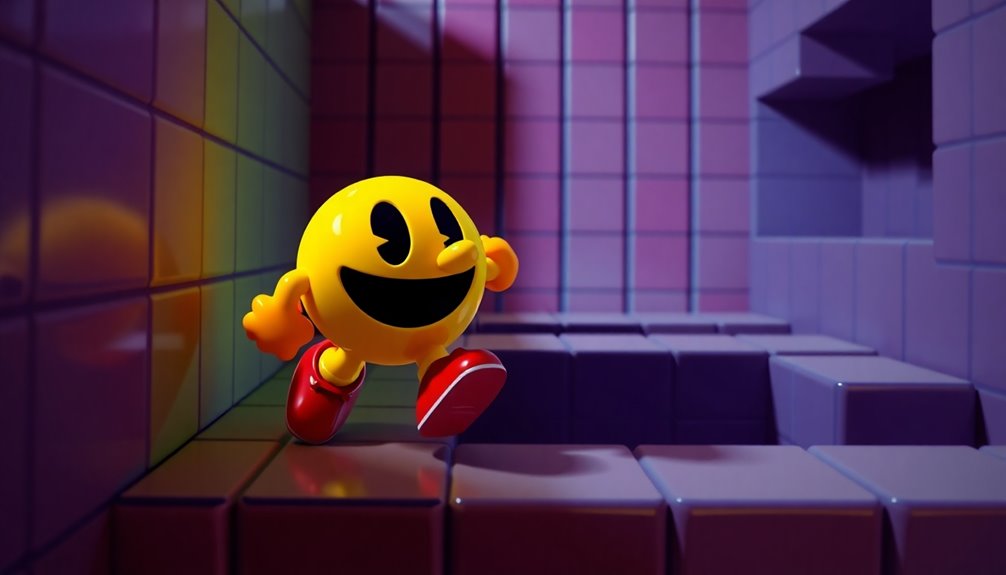
At its core, Pac-Man showcases a blend of innovative technical design and engaging gameplay that captivated players worldwide. The game features vibrant visuals rated 9/10, boasting smooth animations and a distinctive color palette that set it apart from its contemporaries. The cheerful sound effects, including the iconic "wocka-wocka" noise, further enhance the experience, earning an audio rating of 7/10.
Central to the gameplay are the ghosts, whose movement and behavior are governed by complex algorithms. These algorithms dictate their targeting and interactions with Pac-Man, creating a dynamic challenge that keeps players on their toes. The Z80 assembly code that powers the game allows for this intricate ghost behavior, making each chase feel unique and unpredictable.
In contrast, the Atari 2600 version faced significant criticism for its poor graphics and gameplay quality compared to the original arcade release. Despite this backlash from consumers, it surprisingly sold over 7 million copies, illustrating the disparity between consumer expectations and the actual gameplay experience. Ultimately, Pac-Man's technical innovations laid the foundation for its enduring legacy in the gaming world.
Cultural Impact
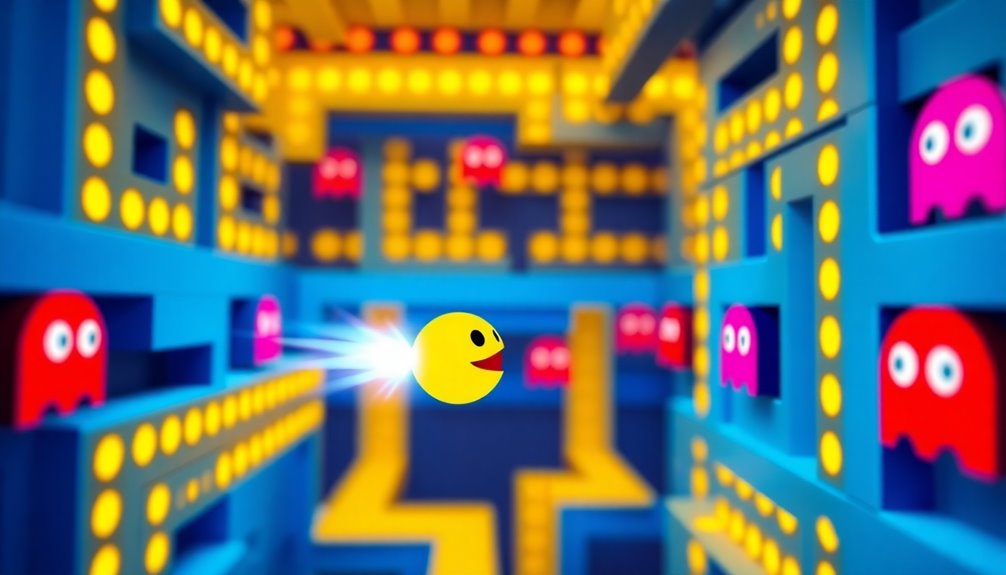
As players navigated mazes and gobbled up pellets, Pac-Man transformed into a cultural phenomenon that transcended the gaming landscape of the 1980s. It became a cultural icon, shifting perceptions of video games and appealing to a broader audience, including a significant female audience. By 1982, around 30 million active players in the U.S. included many women, marking a pivotal change in the gaming community.
Pac-Man's non-violent themes and character-driven gameplay set it apart from other games, influencing future game design and marketing strategies. Its success generated over $1 billion in merchandise sales by 1982, a staggering amount that showcases its impact on consumer culture. The hit single "Pac-Man Fever" reached No. 9 on the Billboard Hot 100, further embedding the game into popular culture.
Today, Pac-Man's legacy endures through its inclusion in gaming hall of fames and constant adaptations across various media platforms. The game not only changed how video games were perceived but also paved the way for future titles to explore similar themes, ensuring that Pac-Man remains relevant in contemporary culture.
Merchandise and Media
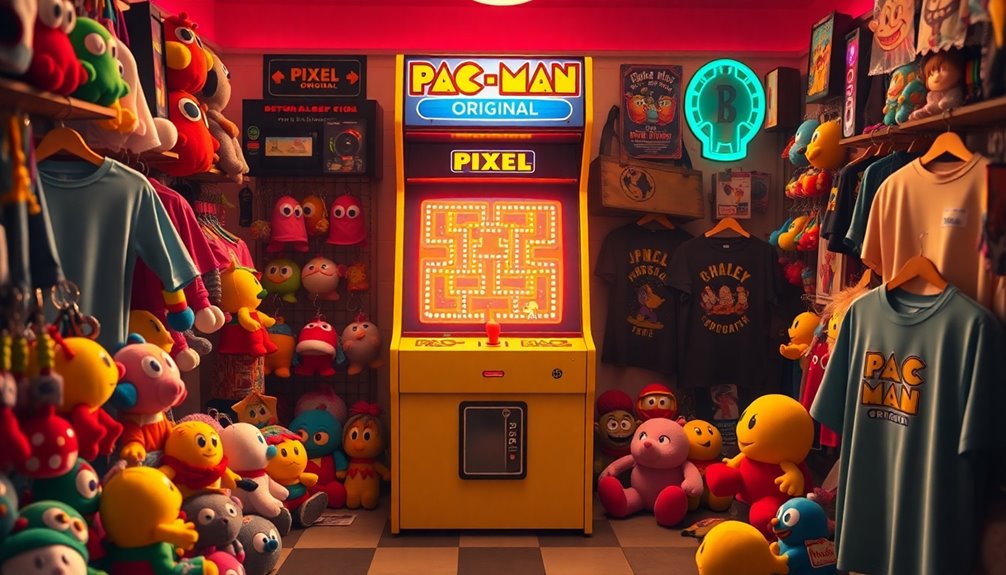
The explosion of merchandise surrounding Pac-Man showcases how deeply the game resonated with audiences beyond just the arcade. By 1982, over 95-105 licensees were hawking various Pac-Man merchandise, contributing to total sales exceeding $1 billion in the U.S. when adjusted for inflation. This diverse range included toys, clothing, jewelry, bicycles, and even breakfast cereals, highlighting the game's wide appeal across different demographics.
The animated series "Pac-Man," which aired on ABC from 1982 to 1983, became the highest-rated Saturday morning cartoon, embedding the characters further into popular culture. This franchise didn't stop there; it evolved with a computer-generated series titled "Pac-Man and the Ghostly Adventures," aired on Disney XD in June 2013, proving its continued relevance in modern media.
Music also played a significant role in the franchise's impact. The catchy tune "Pac-Man Fever" by Buckner & Garcia reached No. 9 on the Billboard Hot 100 and was certified Gold, illustrating how deeply the game influenced popular culture. Pac-Man's legacy endures, not just as a video game, but as a multifaceted franchise that continues captivating audiences through various merchandise and media.
Future of Pac-Man

Building on its rich history and widespread appeal, the future of Pac-Man looks promising. The franchise continues to evolve, with titles like Pac-Man 256 showcasing modern twists that keep gameplay fresh and engaging. Namco Bandai's commitment to remakes and sequels ensures Pac-Man stays relevant in contemporary gaming culture, attracting both new players and nostalgic fans.
The enduring appeal of Pac-Man is evident in the ongoing presence of the franchise at gaming tournaments and events, where it consistently draws enthusiastic crowds. This cultural icon has transcended generations, solidifying its status in the gaming industry. With over 43 million units sold and more than $14 billion in revenue as of 2016, Pac-Man's commercial success demonstrates its lasting influence.
As the franchise integrates with modern collaborations and adapts to new gaming trends, you can expect Pac-Man to maintain its iconic status. The future may bring even more innovative experiences, ensuring that Pac-Man remains a staple in gaming culture. Moreover, the franchise's ability to adapt to new trends ensures it continues to attract diverse audiences. So, whether you're a long-time fan or a newcomer, it's clear that Pac-Man's journey is far from over, promising exciting adventures ahead.
Community Engagement
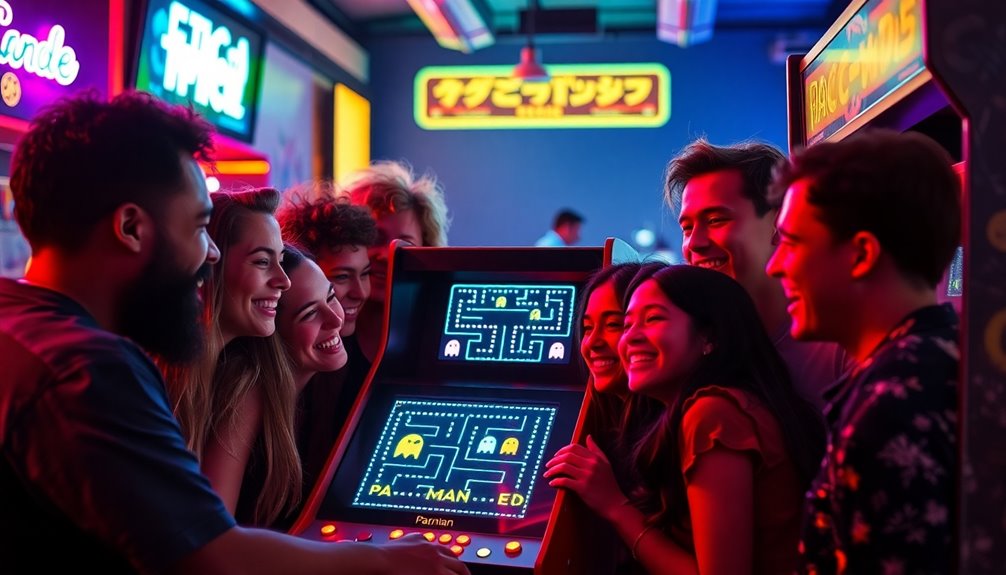
Pac-Man's community engagement is thriving, with countless fans showcasing their creativity through fan art, merchandise, and events that celebrate the franchise. In online forums and social media platforms, you can share your high scores, discuss strategies, and exchange gameplay experiences, creating a collaborative environment that enriches everyone's gaming journey.
Tournaments and annual gaming conventions offer fantastic opportunities to connect with fellow enthusiasts, honoring Pac-Man's legacy while having fun. These events not only highlight competitive gameplay but also provide a platform for fans to bond over shared memories and experiences.
Moreover, the Pac-Man community is alive with innovation, as many fans create mods and fan games, contributing to a vibrant ecosystem of developers and players. The game's ongoing presence in modern adaptations, like mobile ports and sequels, keeps you engaged with fresh content and experiences, ensuring that the excitement never fades.
With such dynamic community engagement, Pac-Man continues to inspire creativity and camaraderie among fans, proving that its iconic maze chase is more than just a game—it's a lasting cultural phenomenon.
Frequently Asked Questions
Why Are the Ghosts Chasing Pac-Man?
The ghosts chase you because they're programmed with unique A.I. behaviors. Each one has a distinct strategy, creating a dynamic challenge as they try to catch you while you navigate the maze and collect pellets.
Was the Real Creator of Pac-Man in the Movie Pixels?
Yes, the real creator of Pac-Man, Toru Iwatani, appears in the movie "Pixels." His character emphasizes the game's significance, blending reality and fiction to celebrate Pac-Man's impact on gaming and pop culture.
Does the Original Pac-Man Have an Ending?
The original Pac-Man doesn't have a traditional ending. You'll navigate through 256 levels, but eventually hit the "kill screen." Instead, you'll focus on maximizing your score and enjoying the endless maze challenge.
What Is the Highest Level in Ms. Pac-Man?
The highest level in Ms. Pac-Man is Level 256, known as the "kill screen." At this point, the game becomes unplayable due to a glitch, corrupting the maze and ending your gaming experience.
Conclusion
In conclusion, Pac-Man's legacy continues to thrive, showcasing its timeless gameplay and cultural significance. You've seen how its innovative mechanics and market influence shaped the gaming industry. With ongoing community engagement and a bright future ahead, Pac-Man remains a beloved icon. As you explore this classic maze chase, you're not just playing a game; you're part of a rich history that connects generations of gamers. So grab those pellets and keep the chase alive!

